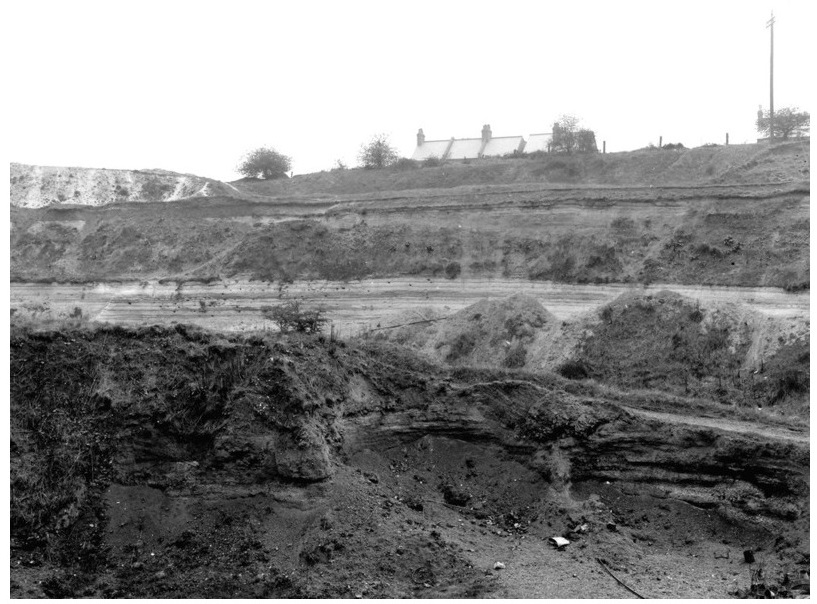Our park is locally known as the ‘Brickfield’, so it’s not at all surprising that it’s the site of an ‘extensive’ brick works, from the Victorian era, right through to 1934. It was on the southern boundary of the estate of Coles-Child, Lord of the Manor (not sure if that was meant to be complementary), who had bought the Manor of Bromley from the Diocese of Rochester and expanded the pit from the small one (about where the ‘dell hole’ or dip is now) into it’s present site.
They extracted the London Clay (initially) for brick making, and when this was exhausted, the underlying gravels and sands, of the Lambeth group, but also called ‘Woolwich and Reading Beds’, for local construction. In the first half of the 1800’s the local supply of bricks had been from more and smaller local pits (no-one carried clay or bricks further than they needed to); there are several marked in the area on the 1868 map.
 |
The ill-fated ivy bridge in about 1858, thanks to Bromley Local History society (link http://www.bblhs.org.uk/) |
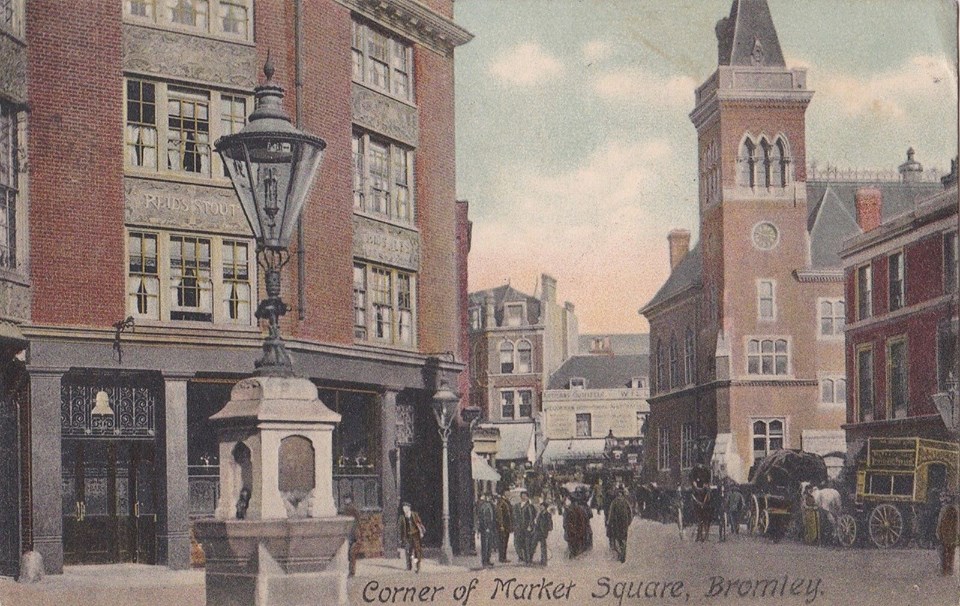 |
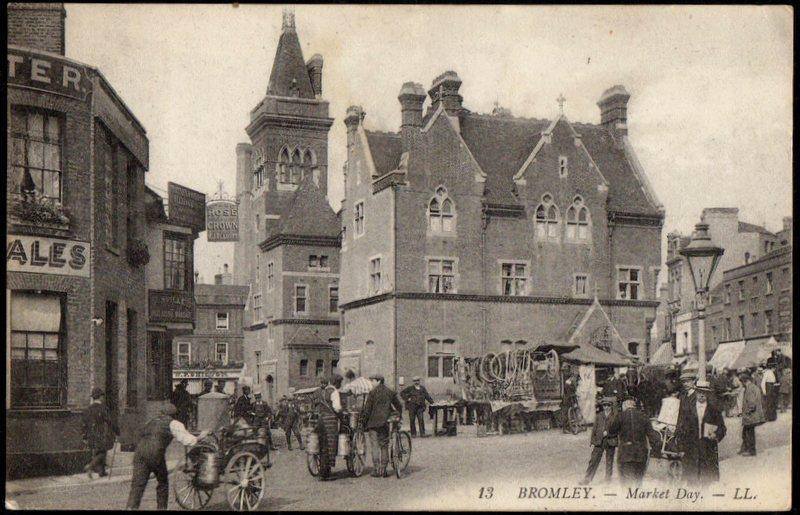 |
| The “new” town hall in Bromley Market Square. Thanks to https://www.facebook.com/bromleytown/?fref=photo for these photos. | |
Though the mid-1800’s Bromley expanded enormously, as it was transformed from a market town into a desirable location for a suburban villa. This expansion only increased after the railway came in 1858, and during this time there was a ready market for bricks, as well as sands and gravels, for the local construction industry; not surprisingly, the brickpit here expanded accordingly.
Bricks from this brickworks were used in the construction of the railway – it was a condition of it passing through Coles-Childs land that it had to built on brick arches from his bricks (presumably including the ill-fated ivy bridge ). It seems that these arches were buried/replaced by an embankment when the 2nd line went through.
As Coles-Child funded the replacement of the timbered town hall with the “new town hall”, this was also built from ‘his’ bricks, from our brick-pit. And the “new” brick town / market hall built with our bricks was then demolished in 1933: “A timber-framed market house was replaced by a Gothic red brick building financed by Mr Coles Child in 1863. The building included the town hall and police station. This was demolished in 1933 and replaced with the current neo-tudor buildings.” from london-footsteps
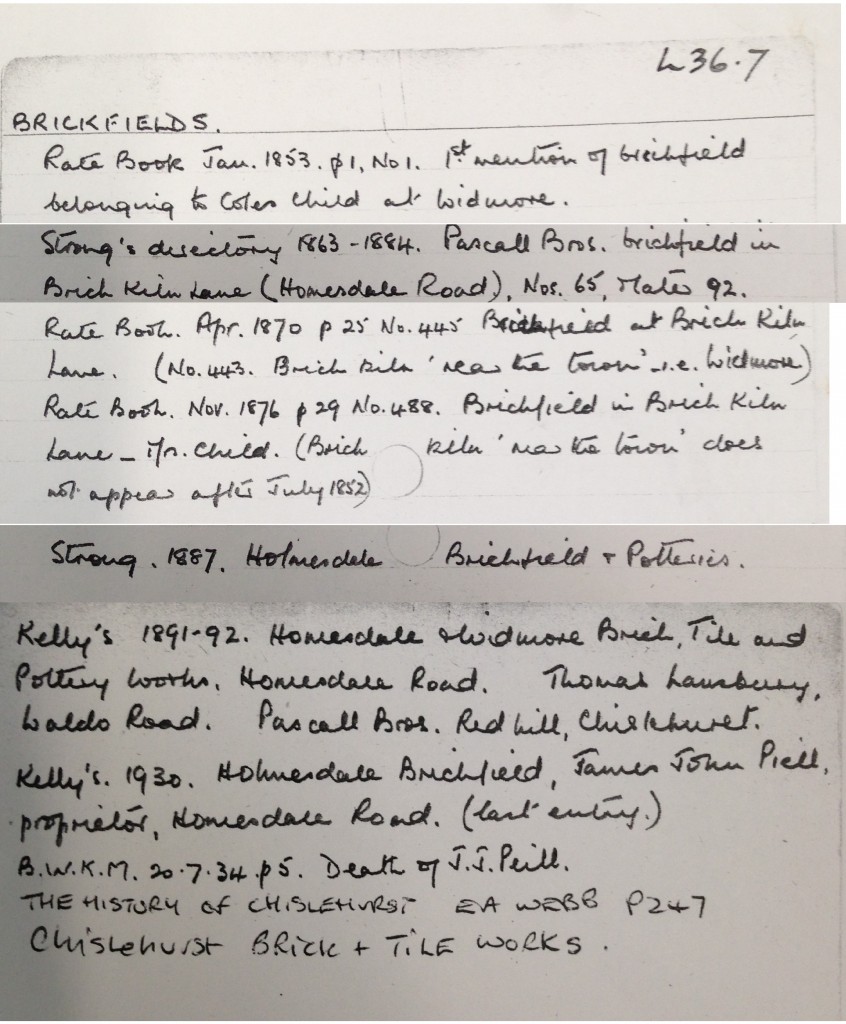 |
Record of the ownership of the brickpit from the rate cards. In the 1850s and 60s, Homesdale Road was known as Brick Kiln Lane (we’re told there was an brick kiln on the Homedale Road/Havelock Rd corner in addition to the Brickpit). There are other brick/tile works not just at Widmore Green (see ) but at “Chistlehurst West”.The 1930s entry shows James John Peill as the proprietor, which allows it to be tied to the BGS photos on our working-photos-page . Thanks to Felix for locating them in the local archives.Below, the census record is thanks to the Chatterton Road History Society,Daniel Bentley, contribution from the facebook page: |
| Census record for 162 Homesdale Road, James John Peill: Name: James John Peill Age in 1911: 39 Estimated birth year: abt 1872 Relation to Head: Head Birth Place: Bromley, Kent, England Civil Parish: Bromley Street address: 162 Homesdale Road, Bromley, Kent Marital Status: Married Occupation: Manager of Brick Works Registration District Number: 42 Bromley |
Sub-registration district: Bromley ED, institution, or vessel: 19 Household schedule number: 46 Piece: 3648 Household Members: Name Age James John Peill 39 Eliza Jane Peill 39 Margery Peill 12 Winnifred May Peill 1 Eliza Elizabeth Peill 25 |
(interesting side note: according to this article on the Bromley Palace gardens, Coles Child was a wealthy coal merchant when he bought The Lord of the Manor of Bromley from the Bishops of Rochester in 1845 – see Pulham Legacy Bromley Palace Park)
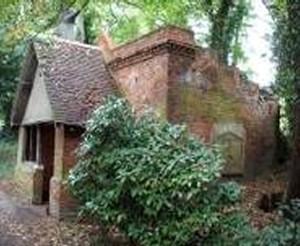 Ice House of Bromley Palace Gardens, from Pulham page.
Ice House of Bromley Palace Gardens, from Pulham page.
6,350 total views, 4 views today

